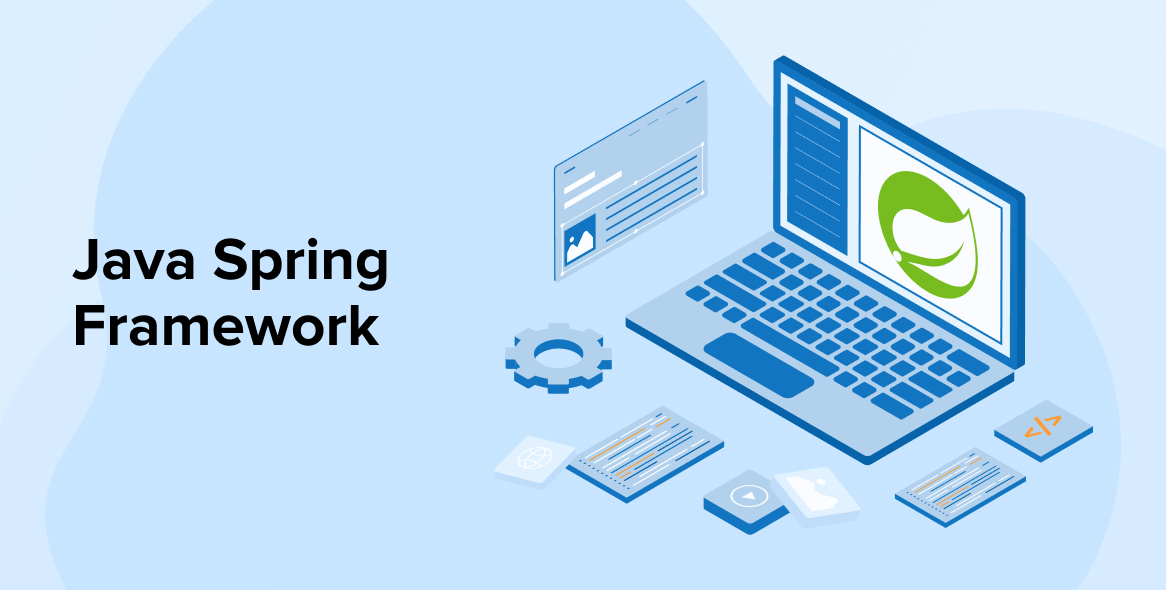
Do you want your Java software application to offer an enhanced user experience? Do you want your Java apps to have a clean and maintainable code base with no technical debt?
If yes, then you have to perform dependency tests, regression testing, cross-browser testing, and more during your software development life cycle. Their successful implementation requires developers to have a deep understanding of the best Java testing frameworks.
Building a wide range of web applications is possible with reliable Java development services as it includes the use of frameworks that offer benefits such as ease of use, platform independence, and more.
Similarly, Java testing frameworks help create a standard format for writing tests, streamline the entire testing cycle, and enhance your web testing capabilities. Top Java development companies leverage these frameworks to deliver high-quality software applications. What are these frameworks? And how do they benefit you? Let us discuss it in detail.
1. What is Java Testing Framework?
Java testing frameworks are a set of rules compiled with Java programming language to support writing test scripts. Libraries, object repositories, test data handling, and coding standards are some of the functions included in those general rules.
Moreover, the Java frameworks empower the testing team with automation guidelines and standardized structure which helps increase the speed, efficiency, and effectiveness of the testing process.
1.1 Benefits of Java Testing Frameworks
Some of the benefits you can get by using Java-based frameworks to test your apps are as mentioned below:
- Efficiency: Best Java testing frameworks provide a variety of tools and reusable components along with the proper guidelines on how to use them. This enables you to test the applications with great speed and efficiency.
- Automation: Top Java testing frameworks allow you to automate the entire testing process which results in reduced manual work.
- Security: Java testing frameworks could help developers analyze the app’s codebase to find potential weaknesses and vulnerabilities before it could turn into huge problems. This way these testing frameworks ensure that your Java apps are safe to use.
- Reliability and consistency: Using test frameworks, developers can automate the testing process making it consistent across all platforms and environments. Manual testing is prone to more errors compared to automation testing. But of course, to achieve high reliability and consistency, you need to draft pretty good test scripts for automation testing.
- Coverage: Java developers can easily extend the range of their test coverage using these frameworks. They facilitate a more rigorous and exhaustive code analysis.
- Instant Feedback: Automated tests in Java frameworks provide real-time feedback. This allows the developers to address the issues and resolve them quickly without any need to stall the development process.
2. Top 12 Java Testing Frameworks
This section offers insights into the most popular Java testing frameworks and how they empower your software team and simplify development projects.
2.1 JUnit

JUnit is a Java-based framework famous specifically for unit testing. Its ability to provide fast results, high efficiency, ease of use, and simplicity have made it a preferable choice for unit testing. The Java-based testing framework aims to help developers find and fix bugs, boost quality, and increase productivity and code stability.
Unit testing is performed in JUnit to validate the small chunks of code before they are sent to the QA testers. This open-source Java framework ensures that the writing and execution of unit tests are seamless.
Pros:
- The test runners from JUnit execute the tests.
- Test expected outcomes using assertions.
- JUnit can quickly identify the exceptions.
- It works with Java 5 and all the versions above it.
Cons:
- Can’t manage several tests simultaneously.
- Testing GUI codes are not supported.
- Doesn’t support dependency testing.
2.2 TestNG

TestNG is built from JUnit. It is one of the most versatile testing frameworks that supports multiple tests including integration, end-to-end, and unit testing. The reason behind creating TestNG is to account for the limitations of the top Java testing frameworks from which it is derived.
In a scenario when you need to run multiple test cases, TestNG can be really helpful. Parallel testing helps reduce the overall execution time of the tests as well as improves its efficiency. TestNG also supports prioritization and test grouping.
Pros:
- Can perform data-driven testing.
- Supports various types of cleanup choices and setups by offering multiple kinds of after/before annotations.
- Supports multiple threaded testing.
- Uses XML files to configure test suites.
- Supports dependent test methods.
- Offers runtime configuration and flexible API plugin.
Cons:
- Setting up and installing TestNG takes time.
- Need experienced developers to manage its resources.
- If the project doesn’t need test case prioritization then TestNG is not suitable for it.
2.3 Mockito

Mockito is an efficient Java testing framework. It is open-source and developers mainly use it for unit testing. Mockito automatically generates mock objects using annotations.
The syntactic sugar of this test framework allows you to write behavior-driven development (BDD) tests. They are further utilized with Java Reflection API for the development of mock objects that create an accurate interface.
The Mockito testing framework makes it easy for developers to write tests by building a mock exterior support and using it in the tests. Hence, with Mockito, the test code is simplified enough to understand and imply necessary changes to them. This framework is also compatible with other Java testing frameworks such as JUnit and TestNG.
Pros:
- Eliminates the manual development of mock objects.
- Uses annotations to automatically generate mock objects.
- Simple setup.
- Cost-effective.
- Safe refactoring.
- Ideal for generating proof of concept or POC.
- Has better void method handling in comparison to other Java test frameworks like EasyMock.
Cons:
- Doesn’t support mocking of local variables.
- Doesn’t support static and private methods.
2.4 Selenide

If you want to write an expressive, precise, and stable UI test for your Java app then Selenide is the right testing framework for you. Modern testing technologies Like Ajax have a timeout problem, and even WebDriver needs certain features to deal with a timeout. But Selenide does not face any such complications.
It is easy to learn and use Selenide and you don’t need any tutorials for it. If you just focus on the business logic then you can create tests with just a few lines of code.
Pros:
- Automatic screenshots.
- Solves all the issues present in Ajax by running stable and accurate tests.
- Supports tests created with Angular.
- Its concise API allows you to write shorter and more readable tests.
Cons:
- Customizing Selenide is a little complicated.
2.5 Gauge

Gauge is an open-source, automated Java testing framework that specializes in acceptance testing under low-code environments. Gauge is created with a business-oriented language and it supports external sources.
Pros:
- Gauge offers a variety of templates that are easily accessible in any language.
- Supports command line which allows you to integrate with CI/CD tools easily.
- Open-source gauge API enables you to create your own plugin.
- Automatic screenshots in case of event failures which helps you quickly identify anomalies.
- Offers parallel execution features that allow you to build scalable tests.
- Can be easily integrated with cloud-based solutions.
Cons:
- It is quite challenging to find people with experience or knowledge regarding Gauge.
- Safety and security remain the primary concern of this Java test framework.
2.6 Katalon

Katalon is used to test the quality of software products such as desktop, mobile, web apps, and APIs. This Java testing framework is mainly utilized for API, regression, and end-to-end testing. The developers of the framework claimed that the Katalon is used by more than 10K product teams to add tests to the quality checkpoints in their new codes.
Katalon comes with a built-in configuration that allows the developers to share their coding efforts and automate the tests. They can also use keywords, test case libraries, and templates available in Katalon to extend the coverage of functional testing and quickly automate the test suites.
Pros:
- Katalon offers pre-built snippets that help build assertions quickly for REST, SOAP, and GraphQL testing.
- Java/Groovy scripting.
- Capture and store the locators automatically in the object repositories. It helps update the tests when changes happen in the app’s UI.
- Drag and drop keywords.
- Native integrations.
- Record-and-playback.
- Supports multiple types of tests such as BDD/TDD testing, data-driven testing, and keyword-driven testing.
Cons:
- Because Katalon is not an open-source framework, opportunities for customization are very limited.
2.7 Selenium

Selenium is used for web testing. It tests whether your Java web application is compatible and runs perfectly well on intended operating systems and web browsers. The test scripts in this open-source Java testing framework are written using programming languages like PHP, Python, Java, C#, and more.
Expediting the release cycles and automating the repetitive test cases is possible when utilizing Selenium. Upon integration with the CI/CD pipeline, Selenium can streamline and speed up software deployment. In the case of web browser automation, Selenium provides a large range of tools like Selenium Grid, Selenium WebDriver, and Selenium IDE to ensure the efficiency of the automation tests.
Pros:
- Easy to understand, use, and install.
- Updated frequently.
- Better usability.
- Highly integrable.
Cons:
- Takes too much time to create a test case.
- Lacks built-in reporting functionality.
- Supports web app testing only.
2.8 Cucumber

Cucumber is another BDD testing framework on our list. It is used to automate the tests and the best thing is that you can write the test cases in plain English. That is possible because of its integration with a language parser called Gherkin.
The specification capability of this testing framework is also very popular among developers. It enables you to merge the specifications with the documentation in a single report which is updated automatically.
Pros:
- Offers an intuitive way for developers to state their requirements in a natural language.
- User-friendly UI.
Cons:
- Unnecessary elaborations are created because of its given-when-then format.
- Its integration with Gherkin gives way to many complications.
2.9 Spock

Spock is one of the best Java testing frameworks. It not only allows you to test the Java applications but also enables you to find innovative ways to test the apps that can’t be found using regular Java code. Because this testing framework was created using both Java and Groovy.
Any language that runs Java Virtual Machine can write tests for Spock. Interestingly, even if the code is in Scala or Java programming language, Spock lets you build unit and integration tests. It’s a feat you don’t see in other Java testing frameworks like JBehave or JUnit.
Pros:
- Compatible with most integration servers, build tools, and IDEs.
- Consists of simple and expressive DSL or domain-specific language.
- Great code reusability.
- Good documentation.
- Built-in mocking and stubbing.
Cons:
- You need to have basic knowledge of Groovy to get started with Spock.
2.10 JBehave

JBehave is created with simple language so that the developers especially the beginners can learn and get started with it quickly. This Java testing framework also supports a behavioral-driven development testing approach. It is easy to integrate JBehave with other annotation unit testing frameworks like JUnit.
JBehave can generate products with superior specifications as well as minimize misunderstandings. Because it uses the BDD approach to testing, JBehave creates the test in business domain language which streamlines the communication and helps all the members understand it easily.
Pros:
- Shallow learning curve so easily accessible to beginners.
- Steps class specifications.
- Great documentation.
- Extensive user story reporting features.
- Annotation-based configurations.
Cons:
- It only supports stories.
- JBehave is crucial to the success of BDD testing so it has to rely on communication among members.
2.11 Serenity

Serenity is one of the top test automation frameworks on our list. This open-source library is specifically produced for Behavior-driven development that extends the attributes of JUnit and WebDriver.
When it comes to writing a well-structured test, developers prefer to use this automation testing framework. Serenity is easily integrated with other BDD and test-driven development frameworks like JBehave.
Serenity allows you to conduct acceptance testing in various ways. Writing maintainable tests with JUnit or incorporating them from Selenium WebDriver to test web applications is possible when using Serenity.
If you want to test REST API, then Serenity is the right Java testing framework as it supports the RestAssured feature. You can also use BDD Java tools such as Cucumber or project management tools like Jira with Serenity.
Pros:
- You can generate detailed reports using Serenity.
- Easily integrable.
- Uses DSL.
Cons:
- Coding for automation is complicated.
- It takes a while to generate Feature files.
- Needs continuous communication.
2.12 Spring

Developers can conduct extensive testing with Spring MVC and it doesn’t need to launch the web container. Developers find using this Java testing framework very convenient. Moreover, it provides libraries that allow you to perform automation testing on your Spring apps.
In addition to writing integration and unit tests for the applications, MVC controllers from Spring offer great assistance to the app. Automating the tests for Spring MVC apps then becomes easy using these tools.
Pros:
- The code is container-independent because Spring supports dependency injection.
- Uses a new operator with mock objects to test isolated code.
- Helps with the layering and componentization of code.
- Provide mock Servlet API objects.
- Offers robust abstractions for JSS specifications like JTA, JPA, JDBC, and JMS.
Cons:
- Spring has some unique programming methods so it’s difficult to learn and master the framework.
3. Conclusion
Conducting software testing and QA can be very difficult, time-consuming, and overwhelming. But you can solve all these problems with the effective use of the best Java testing frameworks. They offer necessary guidelines, structured rules, and extensive testing features. This helps increase the code quality and improve overall app performance.
For the project’s success, it is crucial to find suitable testing frameworks. Now, every framework would have something unique to offer and each will have its strengths and weaknesses. What really matters is whether they can fulfill your testing requirements.
Compare the service offerings and limitations of the Java testing frameworks we discussed in this article with your list of testing requirements. This will give you enough clarity to make an informed decision. If you have any doubts or suggestions then feel free to share them in the comments section below.






Comments
Leave a message...